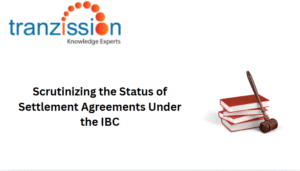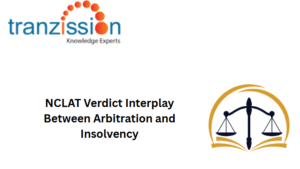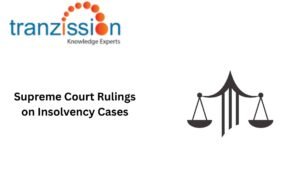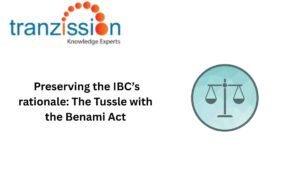
IBC Section 30 – Submission of Resolution Plan
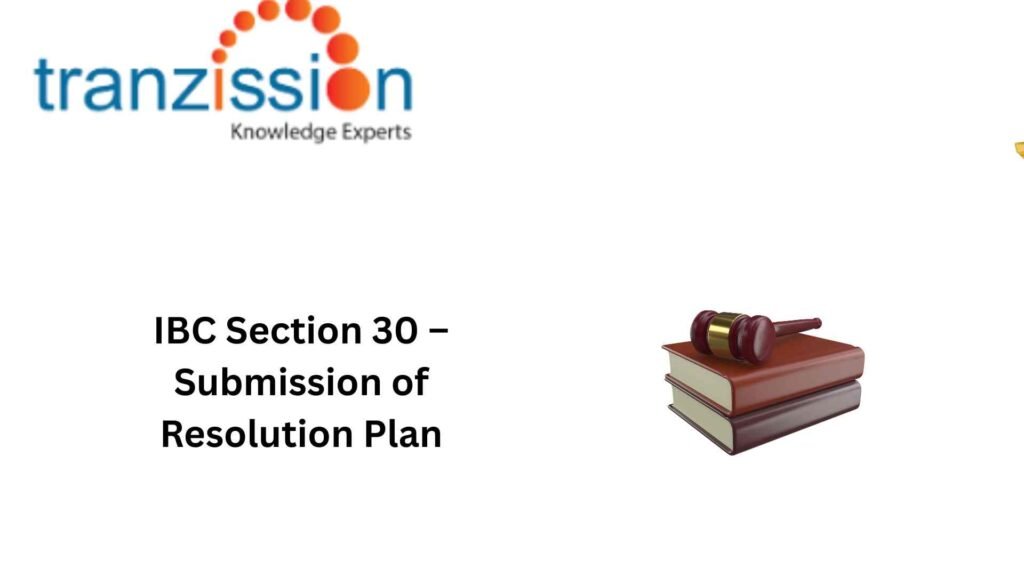
Table of Contents
The Insolvency and Bankruptcy Code, 2016 (IBC) ensures that a financially distressed company can be revived, restructured, or rehabilitated, while also focusing on maximizing the value of the corporate debtor’s assets. It essentially provides a mechanism to resolve the corporate debtor’s insolvency and its inability to clear off creditor debts. There are many stakeholders involved in approving the IBC Section 30 – Submission of Resolution Plan numerous factors that are considered, and several drafts need to be submitted before reaching a successful one,
Understanding IBC Section 30 – Submission of Resolution Plan
What is a Resolution Plan Under IBC?
A resolution plan is a legally binding proposal submitted by eligible applicants to revive an insolvent corporate debtor. Section 5(26) defines a resolution plan as a plan approved by the resolution applicant for insolvency resolution of the corporate debtor as a going concern in accordance with Part II. It outlines the restructuring of debt, operational turnaround strategies, and payment mechanisms for creditors.
Who Can Submit a Resolution Plan?
Resolution applicants, including financial institutions, corporate entities, or individual investors, can submit a resolution plan, provided they follow the eligibility criteria set under Section 29A of the IBC. This provision ensures that defaulting promoters and willful defaulters are restricted from participating.
Read more : Section 104 – Preparation of List of Creditors
What are the Key Aspects of IBC Section 30?
Section 30 of the IBC outlines the submission and approval process for resolution plans, requiring them to provide for the payment of insolvency resolution process costs, while ensuring operational creditors receive at least what they would in liquidation.
Key Elements of a IBC Section 30
The resolution plan outlines the terms of the plan, management or control, and supervision mechanisms:
Mandatory Requirements for a Resolution Plan:
The resolution plan must ensure payment of insolvency resolution costs in priority under section 53. This includes operational creditors receiving the liquidation value they are entitled to under IBC. Further, the plan must provide for the management and control of the corporate debtor post-resolution.
Financial Structuring & Debt Repayment Mechanism:
The resolution plan should propose a structured repayment mechanism for secured and unsecured creditors alike. However, resolution professionals (RPs) need to keep in mind that financial creditors, including banks and financial institutions, are the primary decision-makers in approving the plan.
Operational Turnaround & Business Revival Strategy:
The resolution plan is essentially a comprehensive plan that needs to include restructuring of operations, cost-cutting measures, and potential business expansion strategies.
Role of the Resolution Professional in Evaluating Resolution Plans
Ensuring Compliance With Section 30(2) Criteria:
The RP must verify whether the plan meets all statutory requirements before submitting it to the Committee of Creditors (CoC). After the CoC approves the resolution plan, the RP submits it to the Adjudicating Authority, the National Company Law Tribunal (NCLT).
Due Diligence & Transparency in the Approval Process:
The RP is responsible for conducting financial and legal due diligence of the resolution plan, including verifying compliance with section 29A, to ensure that it is credible and executable.
Presenting the Resolution Plan to the Committee of Creditors:
According to section 21 of the IBC, the RP presents the resolution plan to the CoC for approval, and the CoC can approve it with a vote of not less than 66% of the financial creditors’ voting share. Hence, the RP submits compliant plans to the CoC, which evaluates feasibility, financial viability, and debt restructuring terms.
The Committee of Creditors’ Role in Approving the Resolution Plan
Voting Mechanism for Approving a Resolution Plan:
The CoC approval requires a minimum 66% voting share among financial creditors, however, dissenting creditors may still be bound by the approved plan once the NCLT confirms it.
Factors Considered by CoC in Selecting the Best Resolution Plan:
There are many factors for the CoC before submitting the resolution plan to the NCLT, such as the financial viability and ability to revive the corporate debtor, the equal treatment of all creditors, including secured and operational creditors and maximization of asset value to ensure the highest recovery possible.
Impact of CoC Rejection on Insolvency Proceedings:
Section 33(2) of the IBC empowers the CoC to decide to initiate liquidation before inviting resolution plans. If the CoC does not approve a resolution plan, the corporate debtor moves towards liquidation under Section 33 of the IBC.
Judicial Interpretations & Case Studies on Section 30 of IBC
The courts have ruled that once a CoC-approved plan is submitted to NCLT, it must only be rejected if it violates the IBC provisions. In the Essar Steel Case, the Supreme Court held that the NCLT cannot interfere with the commercial wisdom of the CoC unless there is a procedural irregularity. This case also highlighted the importance of fair distribution among operational creditors and secured creditors. The Jet Airways’ insolvency resolution process showcased delays due to challenges in securing CoC approvals and investor commitments.
Challenges in Submission & Approval of Resolution Plans
The challenges in submitting and approving resolution plans by the RP, the CoC, or the NCLT are:
Delays in Submission & Evaluation of Plans:
There are many reasons for delays in submitting and evaluating plans, like incomplete submissions, poor communication, insufficient resources, and unrealistic deadlines. This ultimately affects the overall resolution plan.
Conflicts Between Financial & Operational Creditors:
Conflicts between financial and operational creditors during a resolution plan can arise due to differing priorities and treatment under the IBC, with financial creditors having more influence in the decision-making process.
Legal Challenges & Appeals Against CoC Decisions:
Resolution applicants must fall under the criteria in Section 29A of the IBC. Rejected applicants often challenge CoC decisions in NCLT and NCLAT, prolonging insolvency resolution.
Best Practices for Drafting & Submitting a Successful Resolution Plan
To improve the drafting and submission of a viable resolution plan, while preventing any delays and balancing the interests of all stakeholders, it is important to:
- Clearly outline debt repayment mechanisms and prioritize operational creditors.
- Make it commercially viable and demonstrate future sustainability.
- All potential conflicts of interest and connected party transactions must be disclosed to CoC.
Conclusion : IBC Section 30
IBC Section 30 resolution plan must address the cause of default, be feasible and viable, and include provisions for its effective implementation, approvals, and the resolution applicant’s capability. To draft and submit a successful resolution plan under the IBC, it is crucial to address mandatory requirements, comply with regulations, and demonstrate the applicant’s competence and ability to manage the company, while also maximising the value of the corporate debtor’s assets. A resolution plan shall also include how it will deal with the interests of all stakeholders, including financial creditors and operational creditors, of the corporate debtor.

